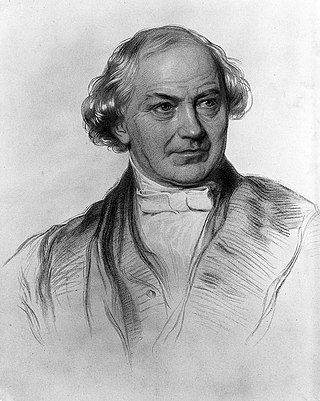Related Research Articles

Classics or classical studies is the study of classical antiquity. In the Western world, classics traditionally refers to the study of Classical Greek and Roman literature and their related original languages, Ancient Greek and Latin. Classics also includes Greco-Roman philosophy, history, archaeology, anthropology, art, mythology and society as secondary subjects.

An encyclopedia or encyclopaedia is a reference work or compendium providing summaries of knowledge, either general or special, in a particular field or discipline. Encyclopedias are divided into articles or entries that are arranged alphabetically by article name or by thematic categories, or else are hyperlinked and searchable. Encyclopedia entries are longer and more detailed than those in most dictionaries. Generally speaking, encyclopedia articles focus on factual information concerning the subject named in the article's title; this is unlike dictionary entries, which focus on linguistic information about words, such as their etymology, meaning, pronunciation, use, and grammatical forms.

William Whewell was an English polymath, scientist, Anglican priest, philosopher, theologian, and historian of science. He was Master at Trinity College, Cambridge. In his time as a student there, he achieved distinction in both poetry and mathematics.

Art music is music considered to be of high phonoaesthetic value. It typically implies advanced structural and theoretical considerations or a written musical tradition. In this context, the terms "serious" or "cultivated" are frequently used to present a contrast with ordinary, everyday music. Many cultures have art music traditions; in the Western world, the term typically refers to Western classical music.

Jin Ping Mei —translated into English as The Plum in the Golden Vase or The Golden Lotus—is a Chinese novel of manners composed in vernacular Chinese during the latter half of the 16th century during the late Ming dynasty (1368–1644). Consisting of 100 chapters, it was published under the pseudonym Lanling Xiaoxiao Sheng (蘭陵笑笑生), "The Scoffing Scholar of Lanling," but the only clue to the actual identity is that the author hailed from Lanling County in present-day Shandong. The novel circulated in manuscript as early as 1596, and may have undergone revision up to its first printed edition in 1610. The most widely read recension, edited and published with commentaries by Zhang Zhupo in 1695, deleted or rewrote passages to help understand the author's intentions.

The kamancheh is an Iranian bowed string instrument used in Persian, Azerbaijani, Armenian, Kurdish, Georgian, Turkmen, and Uzbek music with slight variations in the structure of the instrument. The kamancheh is related to the rebab which is the historical ancestor of the kamancheh and the bowed Byzantine lyra. The strings are played with a variable-tension bow.

Vernacular architecture is building done outside any academic tradition, and without professional guidance. It is not a particular architectural movement or style, but rather a broad category, encompassing a wide range and variety of building types, with differing methods of construction, from around the world, both historical and extant and classical and modern. Vernacular architecture constitutes 95% of the world's built environment, as estimated in 1995 by Amos Rapoport, as measured against the small percentage of new buildings every year designed by architects and built by engineers.

Classic Chinese Novels are the best-known novels of pre-modern Chinese literature. These are among the world's longest and oldest novels. They represented a new complexity in structure and sophistication in language that helped to establish the novel as a respected form among later popular audiences and erudite critics.
Clive Upton is an English linguist specializing in dialectology and sociolinguistics. He is also an authority on the pronunciation of English. He has been Emeritus Professor of Modern English Language at the University of Leeds since 2012.
The Maasai religion is the traditional beliefs of the Maasai people of Kenya and Tanzania.

Shilpa Shastras literally means the Science of Shilpa. It is an ancient umbrella term for numerous Hindu texts that describe arts, crafts, and their design rules, principles and standards. In the context of Hindu temple architecture and sculpture, Shilpa Shastras were manuals for sculpture and Hindu iconography, prescribing among other things, the proportions of a sculptured figure, composition, principles, meaning, as well as rules of architecture.
Sean Williams is an ethnomusicologist who teaches at The Evergreen State College in Olympia, Washington.

Paul Hereford Oliver MBE was an English architectural historian and writer on the blues and other forms of African-American music. He was equally distinguished in both fields, although it is likely that aficionados of one of his specialties were not aware of his expertise in the other. He wrote some of the first scholarly studies of blues music, and his commentary and research have been influential.
Architectural design values make up an important part of what influences architects and designers when they make their design decisions. However, architects and designers are not always influenced by the same values and intentions. Value and intentions differ between different architectural movements. It also differs between different schools of architecture and schools of design as well as among individual architects and designers.
The Pevsner Architectural Guides are four series of guide books to the architecture of the British Isles. The Buildings of England series was begun in 1945 by the art historian Sir Nikolaus Pevsner, with its forty-six original volumes published between 1951 and 1974. The fifteen volumes in The Buildings of Scotland series were completed between 1978 and 2016, and the ten in The Buildings of Wales series between 1979 and 2009. The volumes in all three series have been periodically revised by various authors; Scotland and Wales have been partially revised, and England has been fully revised and reorganised into fifty-six volumes. The Buildings of Ireland series was begun in 1979 and remains incomplete, with six of a planned eleven volumes published. A standalone volume covering the Isle of Man was published in 2023.

Kenneth Womack is an American writer, literary critic, public speaker, and music historian, particularly focusing on the cultural influence of the Beatles. He is the author of the bestselling Solid State: The Story of Abbey Road and the End of the Beatles, John Lennon, 1980: The Last Days in the Life, and Living the Beatles Legend: The Untold Story of Mal Evans.

Romanticism in Scotland was an artistic, literary and intellectual movement that developed between the late eighteenth and the early nineteenth centuries. It was part of the wider European Romantic movement, which was partly a reaction against the Age of Enlightenment, emphasising individual, national and emotional responses, moving beyond Renaissance and Classicist models, particularly into nostalgia for the Middle Ages. The concept of a separate national Scottish Romanticism was first articulated by the critics Ian Duncan and Murray Pittock in the Scottish Romanticism in World Literatures Conference held at UC Berkeley in 2006 and in the latter's Scottish and Irish Romanticism (2008), which argued for a national Romanticism based on the concepts of a distinct national public sphere and differentiated inflection of literary genres; the use of Scots language; the creation of a heroic national history through an Ossianic or Scottian 'taxonomy of glory' and the performance of a distinct national self in diaspora.
This is a list of encyclopedias and encyclopedic/biographical dictionaries published on the subject of architecture and architects in any language. Entries are in the English language except where noted.

Monmouthshire Houses: A Study of Building Techniques and Smaller House-Plans in the Fifteenth to Seventeenth Centuries is a study of buildings within the county of Monmouthshire written by Sir Cyril Fox and Lord Raglan and published by the National Museum of Wales. The study was published in three volumes; Part I Medieval Houses, Part II Sub-Medieval Houses, c. 1550–1610 and Part III Renaissance Houses, c. 1590–1714, between 1951 and 1954. The series was republished by Merton Priory Press in 1994. A later historian of Welsh architecture, Peter Smith, described Fox and Raglan’s work as equal in importance, in its own field, to Charles Darwin's On the Origin of Species.
References
- Cambridge University Press, Encyclopedia of Vernacular Architecture of the World
- Routledge, Routledge Architecture Arena